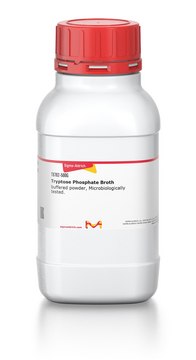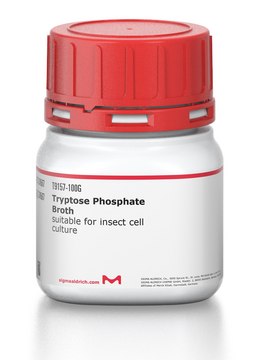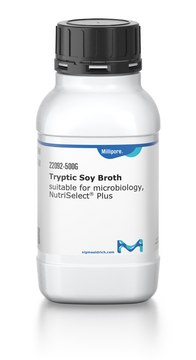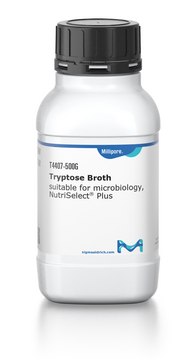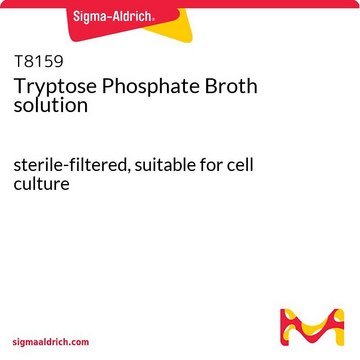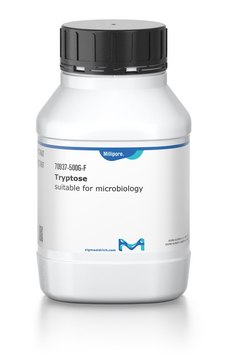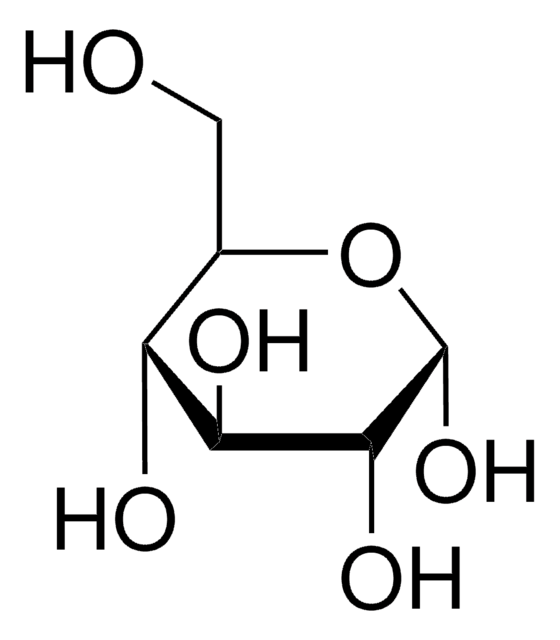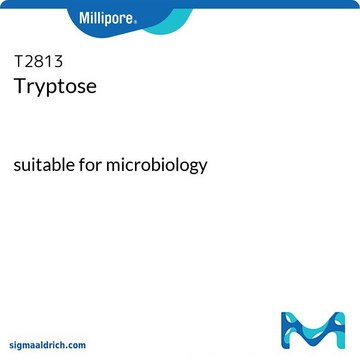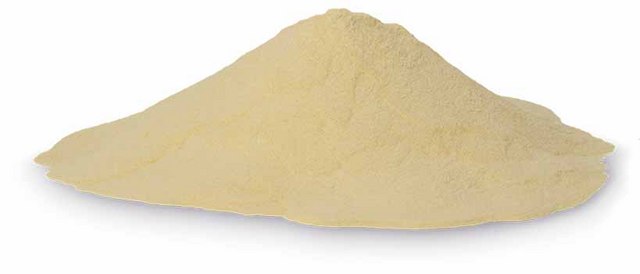推荐产品
应用
In addition to its use for the growth of fastidious micro-organisms, Tryptose Phospate Broth (TPB) has been studied as supplement for the preparation of media that supports vaccine production in BHK-21 cells and the growth of SF21 insect cells in high-density perfusion culture stirred-tank bioreactors.
组分
Tryptose Phosphate Broth (TPB) is composed of four components: Tryptose (20g/L); Dextrose (2g/L); NaCl (5g/L) and Disodium Phosphate (2.5g/L) typically adjusted to pH 7.3. The tryptose component is a peptone (mixture of amino acids and short peptides) derived by the mixed enzymatic hydrolysis (pancreatic enzymes) of the milk protein casein. This hydrolysate provides a source of amino acid based nutrients and survival factors that support the growth of fastidious micro-organisms such as Brucella, Streptococcus, and Neisseria; as well as eukaryotic cells such as insect and animal cells. Dextrose provides a fermentable carbohydrate that can be used by fastidious mico-organisms. Sodium chloride maintains the osmotic and ionic equilibrium and disodium phosphate provides the basic buffering capacity.
其他说明
This Tryptose broth is closely related to Tryptose phosphate broth, but does not contain the phosphate component and it contains a lower concentration of dextrose.
制备说明
This formulation contains Tryptose (20 g/L); Dextrose (1 g/L); and NaCl (5g/L) adjusted to a final pH of 7.2.
可比产品
通常也和此产品一起购买
产品编号
说明
价格
储存分类代码
12 - Non Combustible Liquids
WGK
nwg
闪点(°F)
Not applicable
闪点(°C)
Not applicable
法规信息
新产品
S M Deutschmann et al.
Enzyme and microbial technology, 16(6), 506-512 (1994-06-01)
Spodoptera frugiperda insect cells (IPLB-Sf21-AE) (Sf21), infected with baculovirus expression vectors during their exponential growth phase, are commonly used to produce a variety of heterologous recombinant proteins. In the present study the culture conditions of these insect cells were studied
S N Saha et al.
Vaccine, 7(4), 357-363 (1989-08-01)
Studies were undertaken to develop a cheaper medium with indigenous sources of peptone and casein hydrolysate for continuous culture of BHK-21 (suspension) cells and production of foot-and-mouth disease (FMD) vaccine. Eleven batches of experimental media were prepared using different indigenous
A I Josemans et al.
Annals of the New York Academy of Sciences, 969, 141-146 (2002-10-17)
The in vitro culture of Cowdria ruminantium, the causative agent of heartwater in domestic ruminants, was first achieved in 1985. Culture media were usually supplemented with serum and tryptose phosphate broth, both undefined components, contributing to great variability. Recently, we
我们的科学家团队拥有各种研究领域经验,包括生命科学、材料科学、化学合成、色谱、分析及许多其他领域.
联系技术服务部门